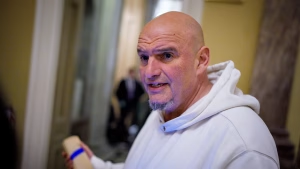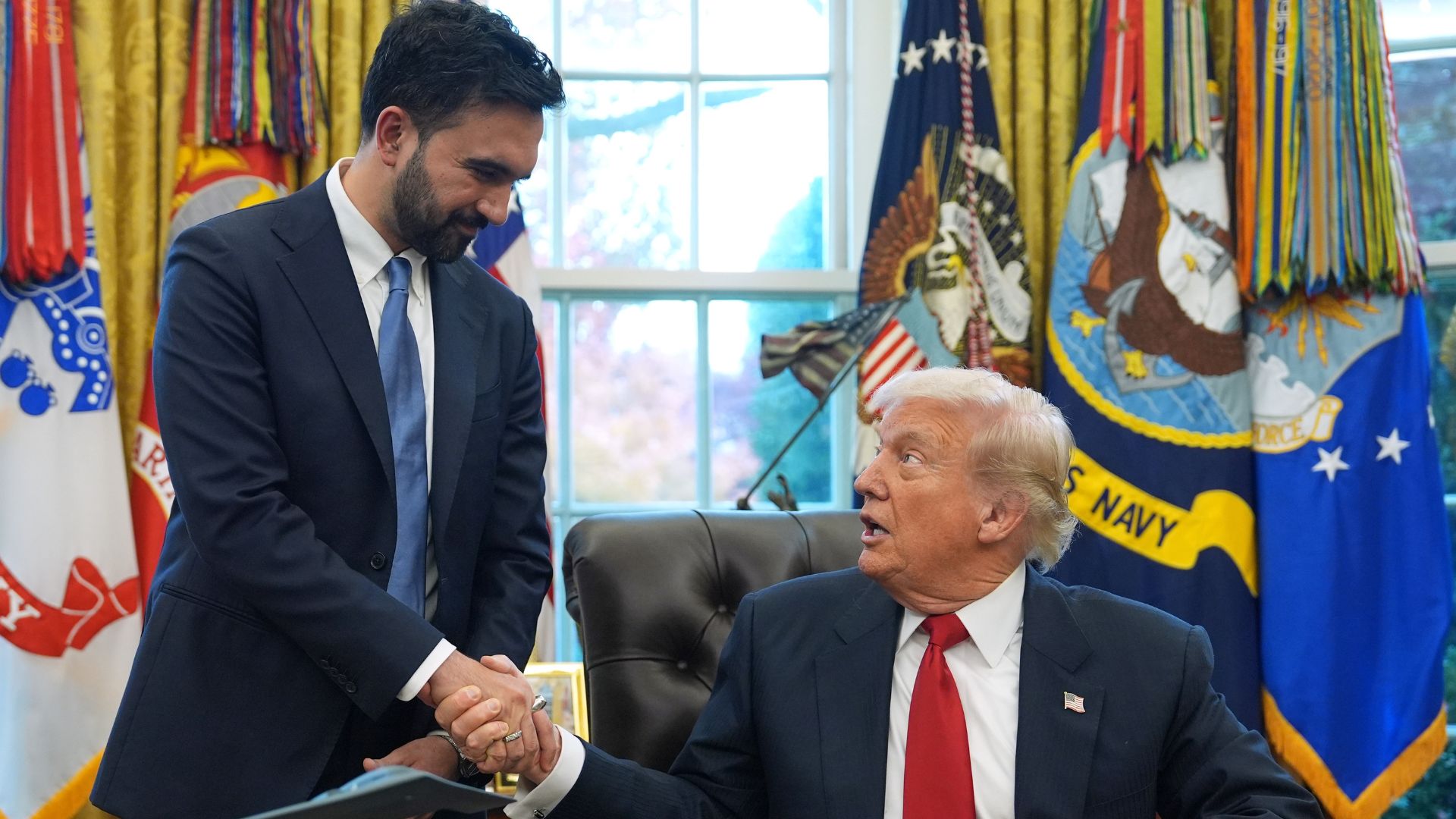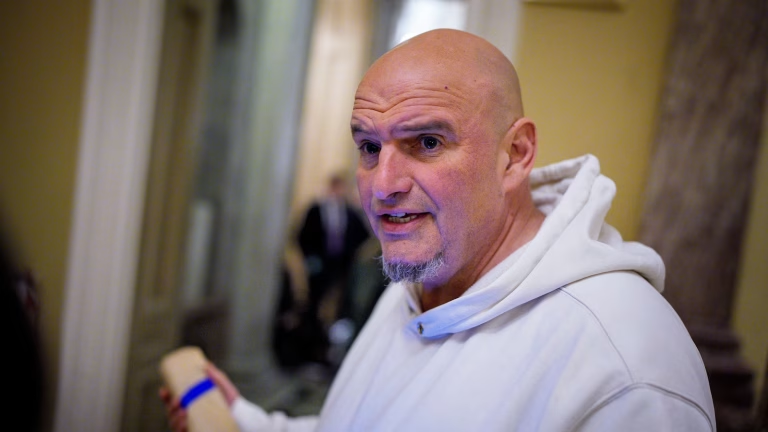In a surprising encounter at the White House, President Donald Trump addressed New York City Mayor-elect Zohran Mamdani’s previous characterization of him as a “fascist,” providing what many observers described as an unusually permissive response. The exchange occurred during a public interaction following their official meeting on Friday, November 21, 2025.
The meeting itself was part of a broader series of engagements as Mamdani prepares to take office in New York City. The mayor-elect, a self-described democratic socialist, has been outspoken in the past regarding his views on the current administration, including his public statement labeling the president a “fascist.” During the White House encounter, reporters asked Mamdani whether he still maintained this characterization.
As Mamdani began to answer, saying, “I’ve spoken about…,” President Trump interjected and appeared to give him a green light to maintain his original assessment. “That’s okay,” Trump said, signaling that he would not take issue with Mamdani’s remarks in that moment. Observers noted that Trump’s approach was unusual for a sitting president, as most political figures would typically dispute or reject public labels of this nature from elected officials.
The exchange drew attention because it illustrated a rare instance of the president directly permitting a political opponent to publicly label him in a highly charged way. Analysts have suggested that this approach could reflect Trump’s broader strategy of reframing contentious statements, using them to underscore his confidence and resilience against criticism. By allowing Mamdani to stand by his remarks without protest, Trump may have been signaling that he is unbothered by political attacks, a tactic consistent with his previous campaign messaging and media interactions.
The context of the meeting also adds layers to the interaction. Earlier that day, the U.S. House of Representatives had passed a resolution denouncing socialism, a move widely seen as coinciding with the incoming mayor’s ideological positions. Mamdani’s comments, in that light, were particularly charged. By stepping in and allowing him to maintain his characterization, Trump may have been attempting to de-escalate potential political tension or, alternatively, to frame the conversation as a demonstration of open dialogue despite ideological differences.
Political analysts noted that the president’s reaction could also play into his messaging with his base. By taking a relaxed stance toward Mamdani’s criticism, Trump avoided giving the mayor-elect additional leverage in the media while simultaneously positioning himself as confident and unshaken by political labels. This approach aligns with his broader communication strategy, which often emphasizes projecting strength and dismissing critics, whether in formal policy discussions or public remarks.
The exchange was brief but garnered significant attention online and in news coverage, partly because it broke from the usual protocol of formal disagreements between opposing political figures. Typically, when a mayor-elect or public official issues a pointed critique, the administration responds with clarification or a counterargument. Trump’s choice to simply say, “That’s okay,” represents a departure from the conventional approach, demonstrating a level of political theater that commentators suggest may serve multiple strategic purposes.
Observers have also pointed out that the president’s interaction with Mamdani could set a tone for future engagements with political opponents. By publicly tolerating strong language directed at him, Trump may be signaling a willingness to engage with critics in a controlled environment, reframing what might otherwise be a confrontational exchange into a display of composure. This could influence both local and national political narratives, particularly as the mayor-elect assumes office in New York City and begins to implement his policy priorities.
The interaction is notable not only for the content of the exchange but also for its broader implications for political discourse. Allowing a public figure to maintain a contentious statement about the president without immediate correction is uncommon, and it draws attention to the performative aspects of political meetings in Washington, D.C. Analysts argue that such exchanges highlight the interplay between political messaging, media coverage, and public perception in modern U.S. politics.
The meeting itself was described by White House sources as productive, with both sides discussing municipal and federal issues, including infrastructure, public safety, and economic initiatives affecting New York City. Despite the ideological differences between Trump and Mamdani, the interaction appeared cordial and professional, culminating in the brief but highly publicized moment regarding the “fascist” label.
For Mamdani, the president’s response may have represented a strategic moment as well. By having the opportunity to maintain his earlier characterization without immediate pushback, he gained a platform for reinforcing his political messaging and ideological stance. The incident underscores the delicate balance between asserting political identity and engaging in governance, particularly in the context of interactions with federal officials.
Political commentators have also suggested that the exchange reflects broader trends in U.S. political communication, where moments of unscripted interaction can dominate media coverage and public discourse. The brevity and simplicity of Trump’s “That’s okay” remark contrasts sharply with the often heavily scripted and carefully managed responses typically expected from sitting presidents. This contrast has fueled discussions about the evolving nature of political theater and the ways in which personal interactions are increasingly amplified through media channels.
Moreover, the exchange may have implications for public perception of both figures. For Trump, allowing the mayor-elect to speak without interruption could reinforce an image of confidence and political savvy, while for Mamdani, the moment offered an opportunity to assert his ideological identity in a highly visible national setting. Analysts suggest that both participants may have calculated the optics carefully, recognizing the potential impact of even a brief remark on broader audiences.
The incident has sparked conversations among political strategists, journalists, and citizens alike. Social media discussions highlighted reactions ranging from surprise to approval, with some praising Trump for his unconventional handling of criticism and others interpreting the moment as an indication of the evolving dynamics between federal and local officials. The public debate surrounding the exchange also reflects heightened interest in political transparency, accountability, and the role of civility in public discourse.
Looking ahead, the exchange between Trump and Mamdani may influence future interactions between federal leaders and municipal officials. By establishing a precedent for allowing controversial statements to stand without immediate contestation, the moment may encourage similar approaches in other political contexts, potentially reshaping expectations for how disagreements are managed in public forums.
In addition to the ideological backdrop, the meeting included discussions on cooperative efforts for city and federal initiatives. While much of the focus has remained on the brief exchange about political labels, insiders note that substantial portions of the meeting addressed policy concerns ranging from budget priorities to community engagement strategies. These substantive discussions demonstrate that, despite media focus on dramatic soundbites, governance and practical considerations remain central to such meetings.
The president’s handling of Mamdani’s statement also underscores the complex interplay between media coverage and political messaging. By choosing not to contest the label publicly, Trump effectively controlled the narrative by projecting confidence and nonchalance, a tactic that may resonate with supporters who value displays of perceived strength and composure. At the same time, the incident raises questions about how media framing can amplify isolated moments, potentially overshadowing broader policy discussions.
Ultimately, the interaction between Trump and Mayor-elect Mamdani reflects multiple dimensions of contemporary politics: personal dynamics, ideological conflict, media strategy, and the performative nature of public interactions. While brief, the moment has generated extensive commentary and analysis, highlighting the enduring significance of even minor exchanges in shaping political perception and public discourse.
As both figures move forward in their respective roles, the White House meeting serves as a case study in navigating ideological differences, managing public perception, and leveraging media attention. The brief but striking exchange—Trump permitting Mamdani to stand by his “fascist” remark—demonstrates how political theater, strategy, and interpersonal dynamics intersect in high-profile settings.
This unusual interaction will likely remain a reference point for political observers and strategists analyzing the communication styles and negotiation tactics of both federal and local leaders in the current political landscape. The moment encapsulates the complexity of public office, where messaging, optics, and policy intersect in ways that shape both immediate reactions and long-term perceptions.
In sum, the meeting between President Trump and Mayor-elect Mamdani, while largely focused on governance, is now remembered primarily for the brief, unexpected exchange regarding political labeling. By allowing the mayor-elect to maintain his prior characterization, Trump introduced a rare instance of flexibility and control in public political discourse, leaving analysts and the public alike to evaluate the implications of this unconventional moment.
This interaction underscores how even brief, unscripted moments can resonate widely in the political arena, influencing perceptions, shaping narratives, and highlighting the increasingly performative nature of public political life in the United States.

Emily Johnson is a critically acclaimed essayist and novelist known for her thought-provoking works centered on feminism, women’s rights, and modern relationships. Born and raised in Portland, Oregon, Emily grew up with a deep love of books, often spending her afternoons at her local library. She went on to study literature and gender studies at UCLA, where she became deeply involved in activism and began publishing essays in campus journals. Her debut essay collection, Voices Unbound, struck a chord with readers nationwide for its fearless exploration of gender dynamics, identity, and the challenges faced by women in contemporary society. Emily later transitioned into fiction, writing novels that balance compelling storytelling with social commentary. Her protagonists are often strong, multidimensional women navigating love, ambition, and the struggles of everyday life, making her a favorite among readers who crave authentic, relatable narratives. Critics praise her ability to merge personal intimacy with universal themes. Off the page, Emily is an advocate for women in publishing, leading workshops that encourage young female writers to embrace their voices. She lives in Seattle with her partner and two rescue cats, where she continues to write, teach, and inspire a new generation of storytellers.







